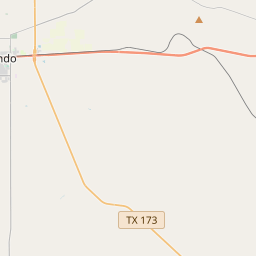Site of the Homestead of Henri Castro
Historical marker location:





Henri Castro (1786-1861), a naturalized American of French origin, befriended the Republic of Texas and became interested in settling here. In 1842 he was given authority to establish a colony of Europeans in Southwest Texas. He succeeded in obtaining some land here on the Medina, from a 1766 grant made by Chares III of Spain. He recruited 485 families and 457 single men, mostly Alsatians. Using his personal wealth, he cared for the colonists as though they were his children. In 1844 he had the Castroville townsite platted, reserving as his homestead this block next to the courthouse site, in the center of town. He erected a stone dwelling and outbuildings, and planted an experimental garden, to discover crops suited to the locality. Bringing his wife Amelia (Mathias) and their four foster children from France, he lived here permanently. As a moral obligation, he continued to direct the state affairs for his colony, although it had impoverished him. On the eve of a trip abroad when the Civil War was beginning (1861), Castro and his wife deeded the homestead to their adopted son, Lorenzo. Castro died at Monterrey, Mexico, soon afterward, and was buried there. Lorenzo sold the homestead in 1872.
1978
As one of the most visible programs of the Texas Historical Commission (THC), historical markers commemorate diverse topics in Texas history, including: the history and architecture of houses, commercial and public buildings, religious congregations, and military sites; events that changed the course of local and state history; and individuals who have made lasting contributions to the state, community organizations, and businesses.
Texas is known for its barbecue, and one of the most famous barbecue restaurants in the state is Kreuz Market in Lockhart. The restaurant has been in operation since 1900 and is still family-owned.
In the 17th century, Spanish explorers arrived in the region, claiming the land for Spain. The Spanish established missions in the area to convert the Native Americans to Christianity and to further their control over the territory. One of the most notable missions was Mission San Francisco de la Espada, which still stands today and is a popular tourist attraction.
During the 19th century, the area that is now Medina County became a part of the Republic of Texas after it gained independence from Mexico. As more settlers moved into the area, the town of Castroville was founded in 1844 by colonists led by Henri Castro. The town became a major hub for German immigrants, and their influence can still be seen today in the town's architecture and cultural heritage.
Over the years, Medina County has experienced significant economic growth and development. The discovery of oil in the early 20th century led to an oil boom in the area, and agriculture has also played a significant role in the county's economy, with cattle ranching and crop farming being major industries.
Today, Medina County is a thriving community that celebrates its rich history and diverse cultural heritage. Visitors can explore the area's historical sites, such as the missions and historic downtown areas, while also enjoying the natural beauty of the surrounding countryside.
Medina County Timeline
This timeline provides a glimpse into the major events and milestones that have shaped the history of Medina County, Texas.
- 1841 - Medina County is established as a county in the Republic of Texas.
- 1842 - Castroville, the county seat, is founded by Henri Castro.
- 1846 - Medina County becomes part of the United States after the annexation of Texas.
- 1850 - D'Hanis, another town within Medina County, is settled.
- 1856 - Hondo is founded and becomes the new county seat.
- 1861-1865 - During the Civil War, Medina County supports the Confederacy.
- 1881 - The International-Great Northern Railroad is completed, boosting economic development.
- 1917-1918 - Many Medina County residents serve in World War I.
- 1920s-1930s - The Great Depression causes economic hardship in the county.
- 1942-1945 - World War II leads to changes in the local economy and military service.
- 1953 - Medina Lake is created with the construction of Medina Dam.
- 1998 - The historic Medina County Courthouse is restored after a fire severely damages it.